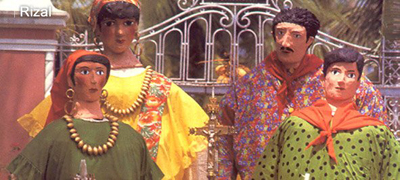
Angono’s Higante Festival
Photo Courtesy of Wow
THE HIGANTES OF ANGONO
by: Mailah Baldemor
Have you ever seen giants? Do you have the slightest idea how they looked like? Our parents read to us fairy tale stories when we were young and occasionally see them in movie theaters. But to tell you the truth, I have seen the giants or the higantes. I never actually believed they existed in real life but I realized that they do when I came to visit a town in Angono. Let me tell you the story. It was a sunny afternoon when my family and I came across Balaw-Balaw, a gallery-restaurant that offers exotic foods for the adventurous diners. Owned by the late Lakeshore artist Perdigon Vocalan, this restaurant is becoming popular among foreign and local tourists alike. Diners can wander in the gallery while waiting for their food to be served. Upon entering the restaurant, you will see the “Mag-anak,”-- the family of higantes that consist of the father, mother, and child, looking closely at the people passing by.
As I remember, I asked him regarding the higantes. He told me about the annual festival of Angono -- the Higante Festival in honor of St. Clement, the patron saint of the fishermen. This festival is celebrated on the 23rd of November. The higantes are made of paper-mache. In
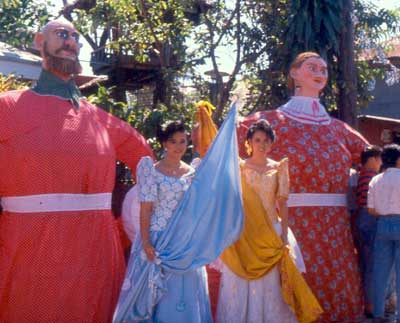
Higante's costume and its inner body is made of bamboo,
rattan and thin iron bars
Photo Courtesy of Wow

under the the sun Photo Courtesy of Wow
These higantes were paraded in the town. Two men help each higante walk by controlling it from inside throughout the entire event. The head has two holes for each man to see through. Additional holes are also made on the higante’s clothing to help the two men see beneath. Children are usually afraid of the two higantes (father and mother) but they are fond of the child. These higantes danced, walked, turned, and ran. According to the book entitled Angono Rizal: Art Capital ng Pilipinas by Ligaya G. Tiamson Rubin. It was stated that Karias Tangkad was the one who made the first higante. Perdigon conceived the idea of having a Higante Festival. The thirteen barangays of Angono are represented by higantes symbolizing their personality and industry. With this idea they where given funding by the Department of Tourism and the Provincial Tourism Office. It was really a good start because the following year as seminars and workshop for higante making took place and a competition was put up to award the best higante made. The higante designs developed as time went on. The higantes became a part of Angono. And the story lives on.
What are these higantes made of? Do they eat small, naughty children? Do they have the goose that lays golden eggs and the singing harp as told from the story of Jack and the Beanstalk? No, they are different higantes. They are made of paper. Giant heads are fashioned from the mold made of clay, which is dried under the sun’s blazing heat. With the rapid growth of modernization and technology clay changed to plaster of Paris and resin. The mold is pasted with lots of newspapers then split into the middle and sun-dried, after which it is then again pasted with the brown paper or Manila paper then split into the middle and sun-dried. The outside body is painted with different designs or dressed with yards of yards of clothing materials and accessories to complete their costume and the inner body is made of bamboo, rattan and thin iron bars.
Recent Articles
.png) FILIPINO ART COLLECTOR: ALEXANDER S. NARCISO
FILIPINO ART COLLECTOR: ALEXANDER S. NARCISOMarch 2024 - Alexander Narciso is a Philosophy graduate from the Ateneo de Manila University, a master’s degree holder in Industry Economics from the Center for Research and...
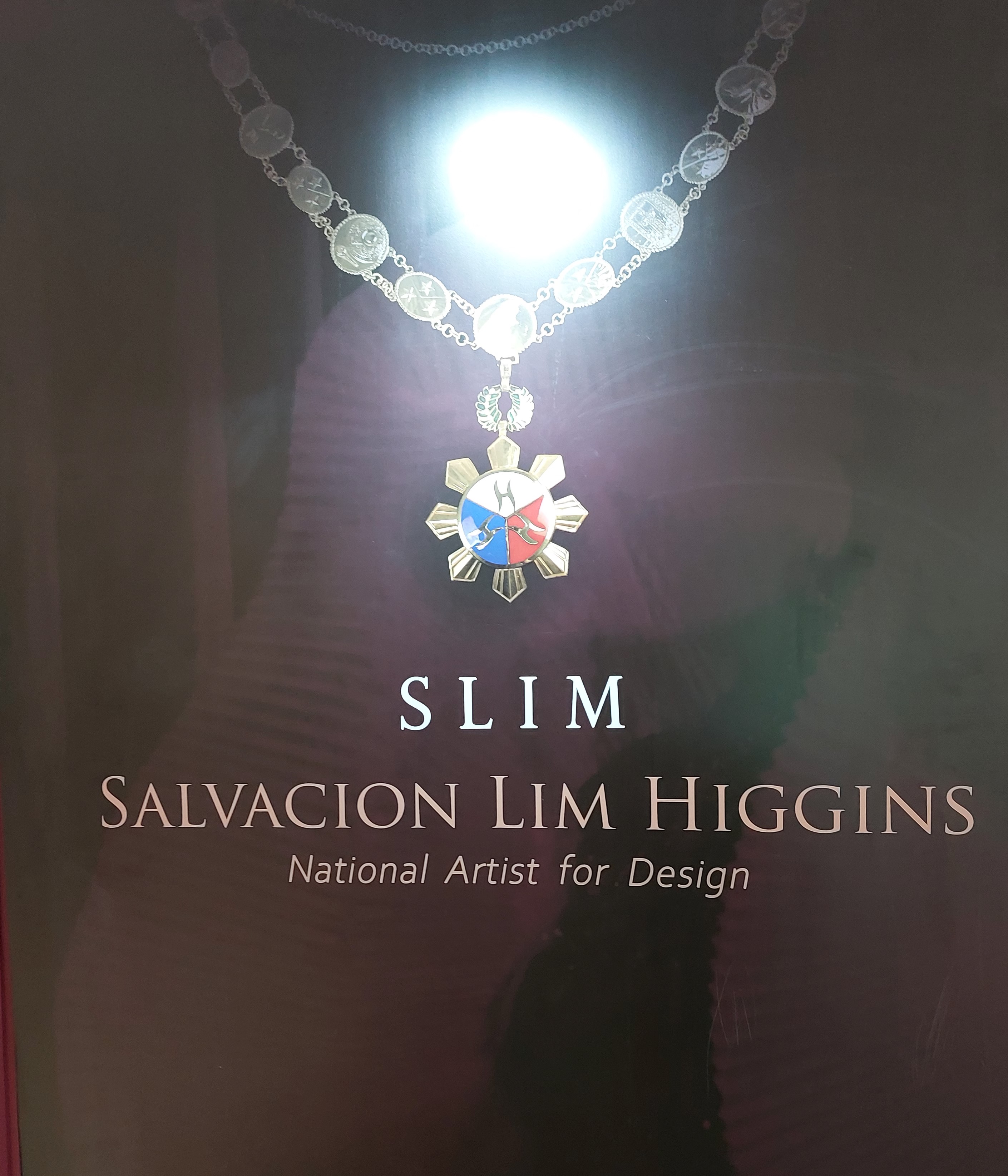 An Exhibition of the Design Legacy of Salvacion Lim Higgins
An Exhibition of the Design Legacy of Salvacion Lim HigginsSeptember 2022 – The fashion exhibition of Salvacion Lim Higgins hogged the headline once again when a part of her body of work was presented to the general public. The display...
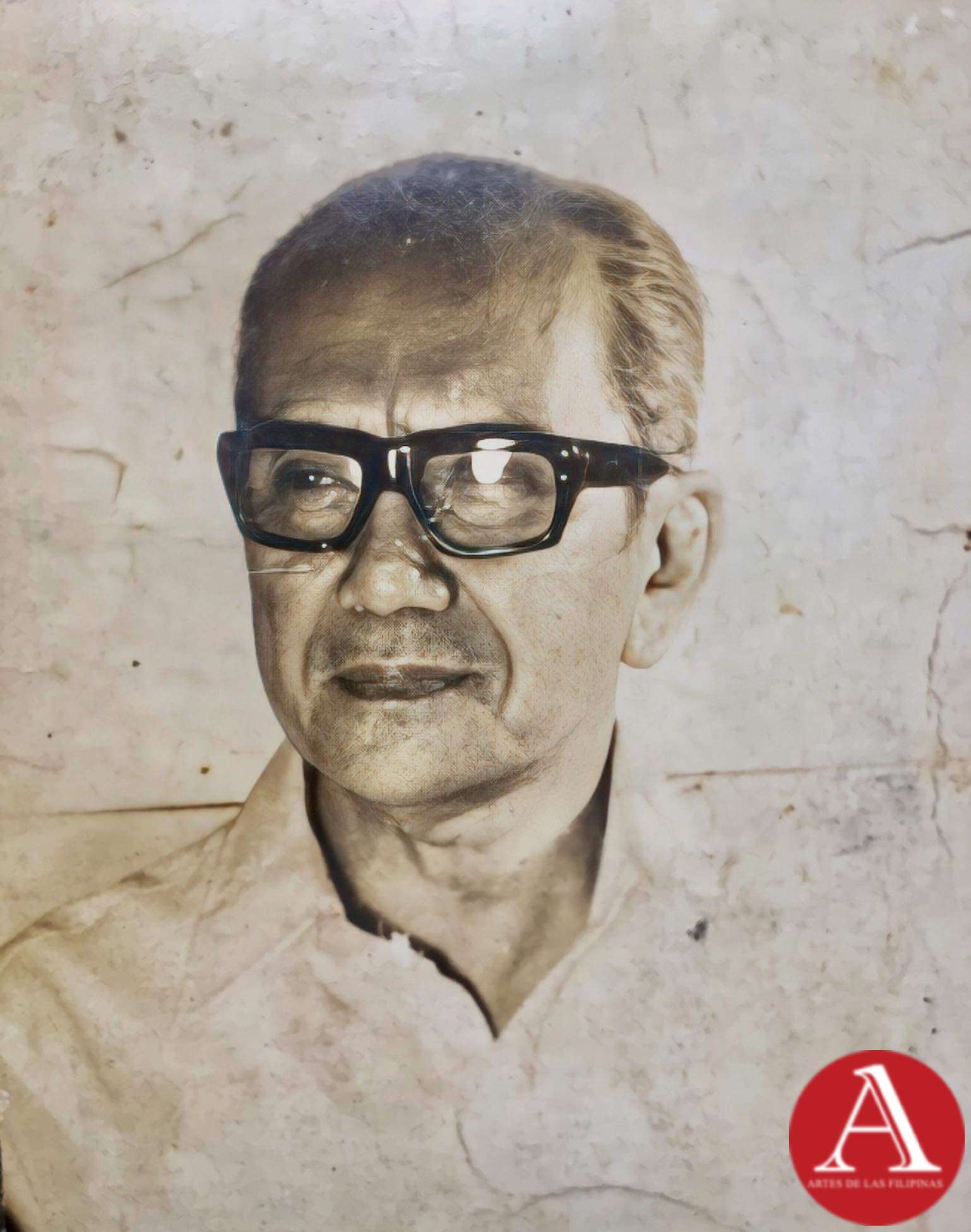 Jose Zabala Santos A Komiks Writer and Illustrator of All Time
Jose Zabala Santos A Komiks Writer and Illustrator of All TimeOne of the emblematic komiks writers in the Philippines, Jose Zabala Santos contributed to the success of the Golden Age of Philippine Komiks alongside his friends...
 Patis Tesoro's Busisi Textile Exhibition
Patis Tesoro's Busisi Textile Exhibition
The Philippine Art Book (First of Two Volumes) - Book Release April 2022 -- Artes de las Filipinas welcomed the year 2022 with its latest publication, The Philippine Art Book, a two-volume sourcebook of Filipino artists. The...
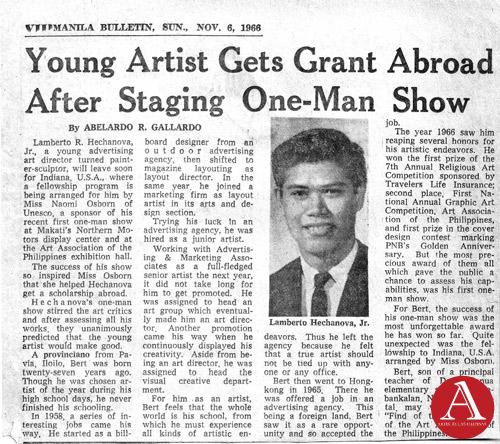 Lamberto R. Hechanova: Lost and Found
Lamberto R. Hechanova: Lost and FoundJune 2018-- A flurry of renewed interest was directed towards the works of Lamberto Hechanova who was reputed as an incubator of modernist painting and sculpture in the 1960s. His...
 European Artists at the Pere Lachaise Cemetery
European Artists at the Pere Lachaise CemeteryApril-May 2018--The Pere Lachaise Cemetery in the 20th arrondissement in Paris, France was opened on May 21, 1804 and was named after Père François de la Chaise (1624...
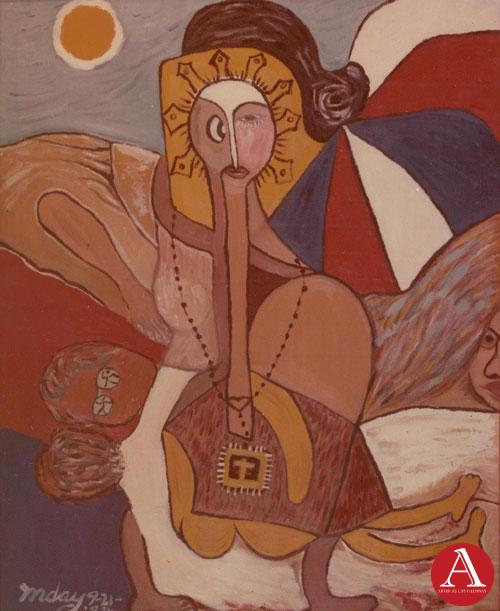 Inday Cadapan: The Modern Inday
Inday Cadapan: The Modern IndayOctober-November-December 2017--In 1979, Inday Cadapan was forty years old when she set out to find a visual structure that would allow her to voice out her opinion against poverty...
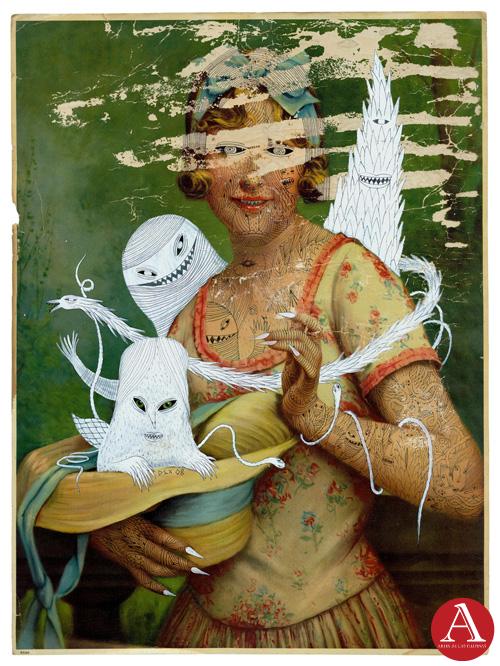 Dex Fernandez As He Likes It
Dex Fernandez As He Likes ItAugust-September 2017 -- Dex Fernandez began his art career in 2007, painting a repertoire of phantasmagoric images inhabited by angry mountains, robots with a diminutive sidekick,...
 Noel Soler Cuizon's Gesamtkunstwerk and Everything in Between
Noel Soler Cuizon's Gesamtkunstwerk and Everything in BetweenApril-May 2017—The public exhibition of Noel Soler Cuizon’s works began in 1987 when he was a member of Hulo, a group of alumni students of the Philippine Women’s...



